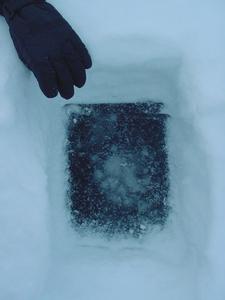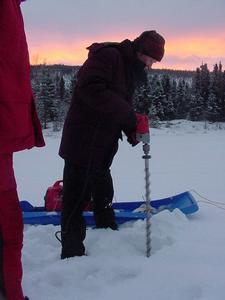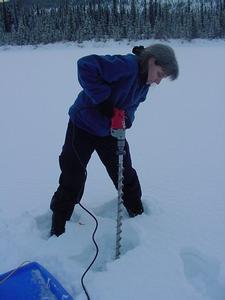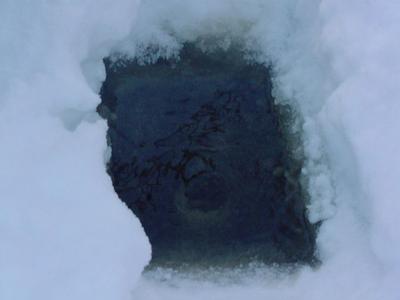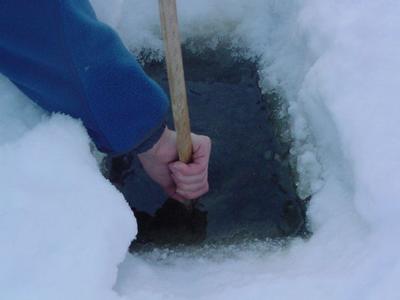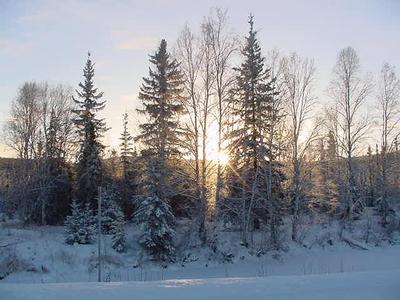
|
17 January, 2002Weather Cloudy Dr. Martin Jeffries, Lynette (interpreter), and I drove out to Poker Flats to collect some snow samples and measurements for snow depth, surface temperature, and base temperature from 11 ponds. For each pond, we drilled three areas to measure ice thickness. The Science Behind Ice Thickness Imagine a small pond, the size of 1 to 2 city blocks, can accumulate downward ice of 2 to 3 feet. According to Fairbanks residents, this is one of the warmest winters ever. There is very little snow, therefore ice thickness is expected to increase. The drive back to town. During the 45-minute drive home from the country after this long day, we passed a chain of remains from gold dredges. Gold dredging, using vessels as large as 90 feet long is an old method of finding gold, leaving miles of rock debris behind. Currently, there are several gold mines where people can pan for gold. The growth of Fairbanks continues to depend on gold as one of their economical resources. Historical Information on Gold in Fairbanks
Contact the TEA in the field at . If you cannot connect through your browser, copy the TEA's e-mail address in the "To:" line of your favorite e-mail package. |




